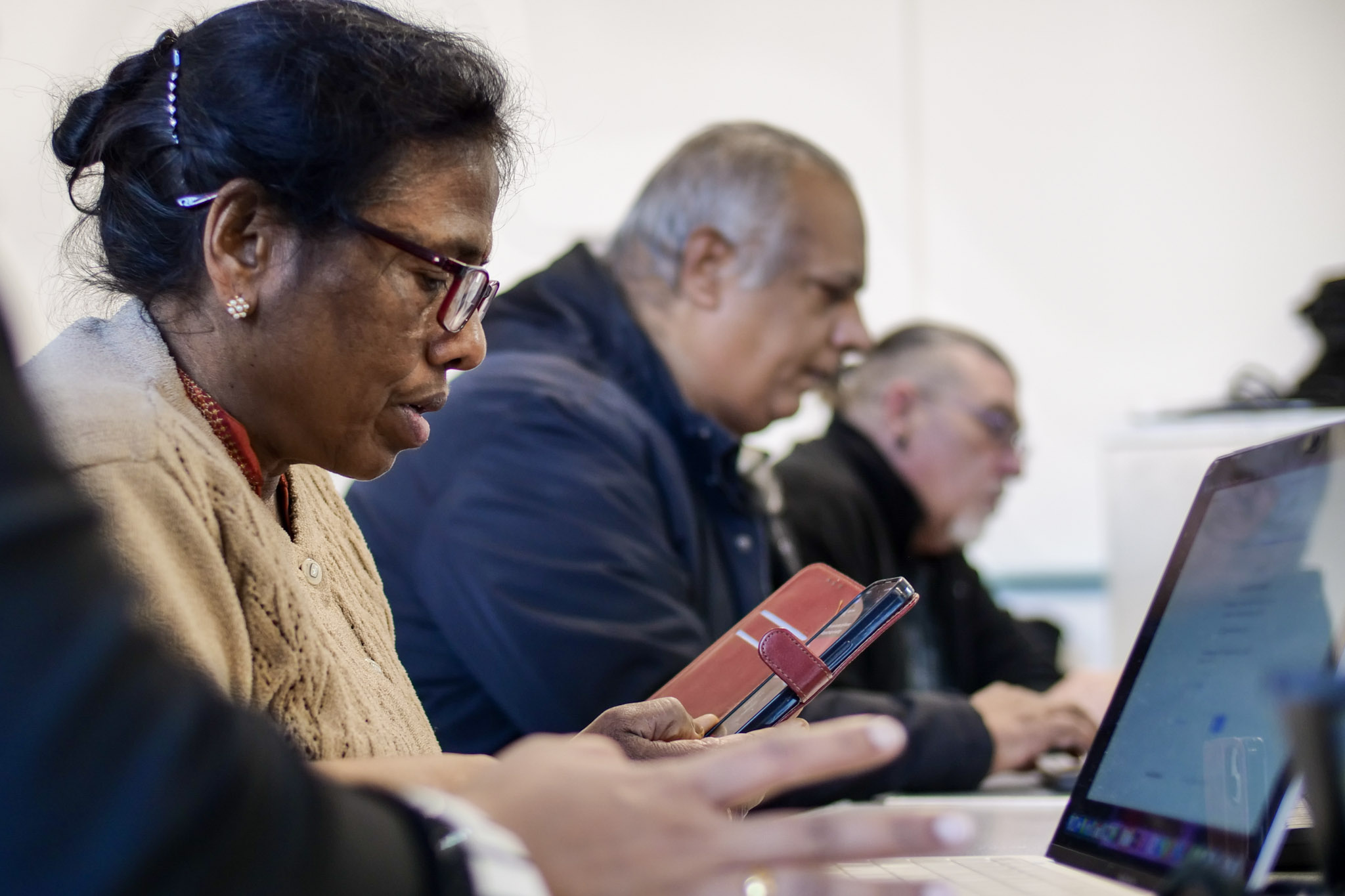![erasing phone contents [Adobe_Stock] stock illustration of a phone being erased](https://www.vodafone.co.uk/newscentre/app/uploads/2023/06/erasing-phone-contents-Adobe_Stock.jpg)
If you're worried about how to erase data and reset your old phone before donating it to the Great British Tech Appeal, use our handy guide for peace of mind and help digitally excluded people.
The Great British Tech Appeal takes smartphones and tablets donated by the public, refurbishes them and, through charity partners such as Barnardo’s, distributes them along with Vodafone SIMs to disadvantaged people who would otherwise struggle to access the internet.
It’s natural to worry about whether it’s safe to give away your old phone, given how much of our personal data is now stored on mobile devices. Rest assured though – wiping your old phone is both highly effective and easy to do.
It’s just as important to remember to turn off services for tracking lost devices, such as Find My iPhone. If you don’t, then the person being helped won’t be able to use it.
Here’s how to reset and erase your old iPhone, iPad and Android devices.
How to prepare your iPhone or iPad (iOS and iPadOS) for factory reset
Before you start, make sure you’ve backed up the data on your iOS/iPadOS device – either to iCloud or to a desktop or laptop computer. If you don’t, then you won’t be able to access any of your data once you’ve completed the resetting and erasure process.
To turn off the Find My service on your old iPhone or iPad, follow Apple’s instructions. To do this, you’ll need your Apple ID password (which is also used to access all of Apple’s online services such as the App Store and iCloud).
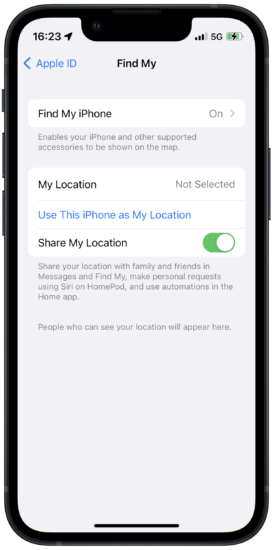
If you’ve moved on to an Android phone, you’ll need to deregister iMessage on your soon-to-be-donated iOS/iPadOS device. Otherwise, text messages could continue to be delivered to your old device, rather than your current one.
How to factory reset and erase iPhone and iPad (iOS and iPadOS)
Once all of the above is done, you’ll be ready to pull the trigger to reset and erase the contents of your iPhone or iPad by following Apple’s instructions.
By default, all versions of iOS going back to 2014’s iOS 8 will encrypt the contents of your device. So, during the resetting and full erasure process, it’s not only the contents of your device that are erased but also the security keys used to decrypt your data. This makes it all but impossible for anyone to recover any of your data once the reset and erasure process has been completed.
To check if your iOS device is encrypted or not, open the Settings app. Scroll down and tap on the Face ID & Passcode or Touch ID & Passcode option. Once you have entered your Passcode, the Face ID/Touch ID & Passcode screen will appear. Scroll to the very bottom of the screen – if the text ‘Data protection is enabled’ is present, then all of your data is encrypted.
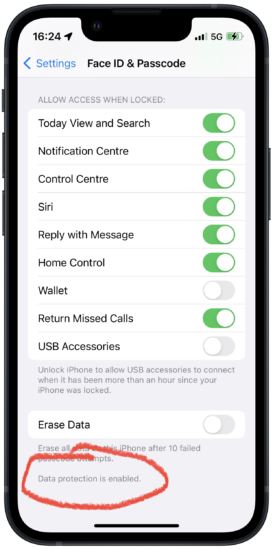
Don’t forget to remove your SIM card!
How to prepare your Android device for factory reset
Before you start, make sure you’ve backed up the data on your Android device to your Google Drive. If you don’t, then you won’t be able to access any of your data once you’ve completed the reset and erasure process.
The exact steps for disabling Google’s Find My Device service will vary depending on which version of Android is installed on your device and who made it. But the following examples should give you a good idea of where to look and what to do.
For example, to find the toggle for Find My Device on a Huawei phone running Android 9:
- Open the Settings app.
- Tap the Security & privacy option. The Security & privacy screen will appear.
- Tap the Find My Device option. The Find My Device screen will appear.
- Tap or slide the toggle to Off to deactivate the service on your old phone.
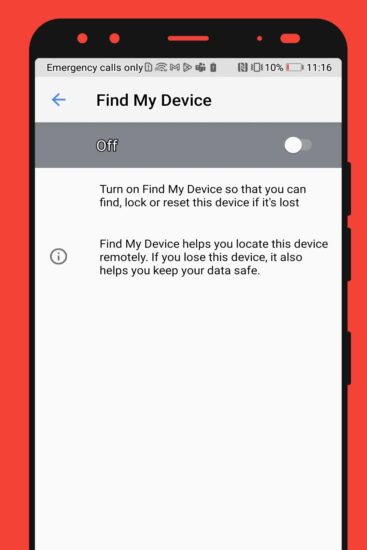
To find the toggle for Find My Device on a Google Pixel 5 running Android 13 and on a Samsung Galaxy S20 running Android 12:
- Open the Settings app.
- Tap the Google option. The Google screen should appear.
- Tap the Find My Device option. The Find My Device screen will appear.
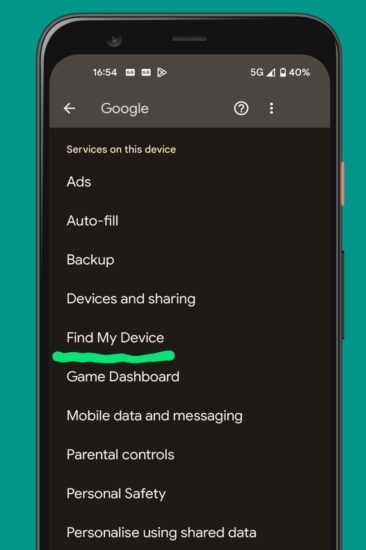
- Tap the toggle labelled Use Find My Device to deactivate the service on your old phone.
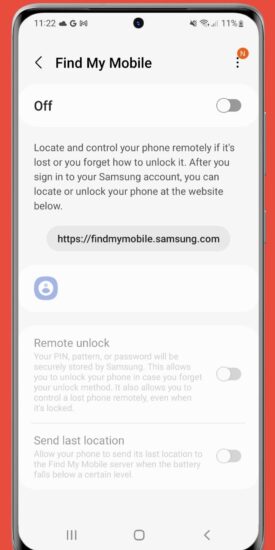
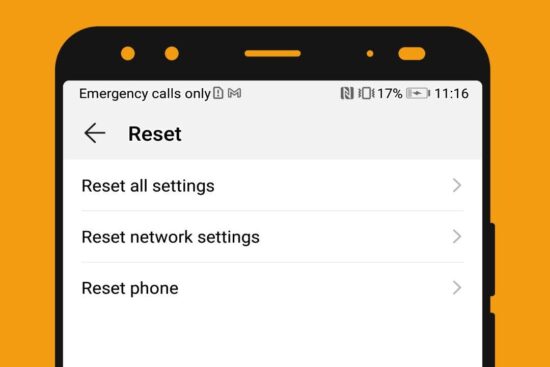
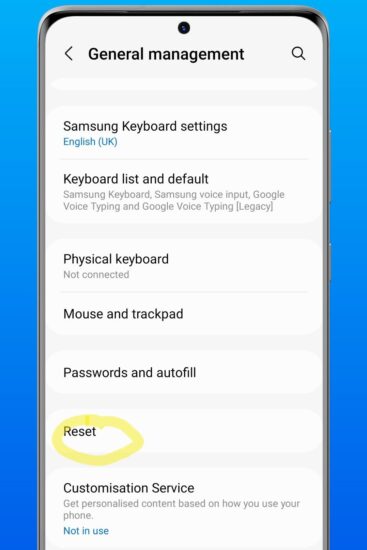
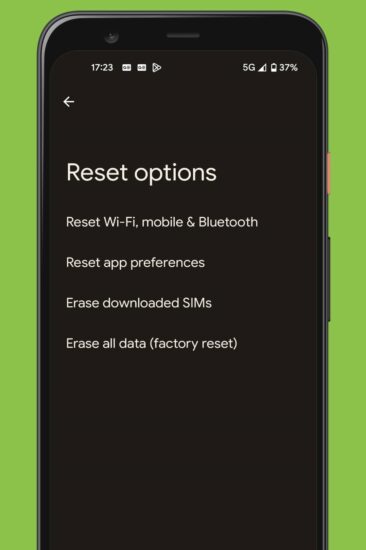
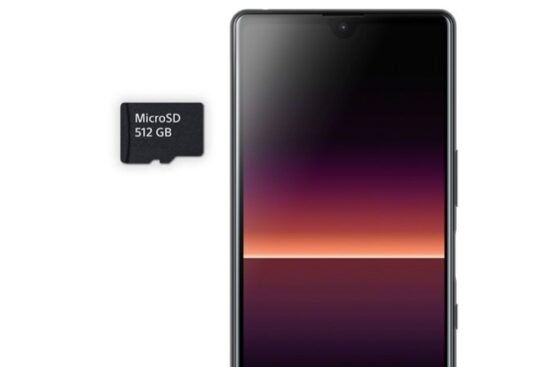
![Ben Wood [centre] at the launch of the Mobile Phone Museum exhibit at PK Porthcurno. Ben Wood [centre] at the launch of the Mobile Phone Museum exhibit at PK Porthcurno.](https://www.vodafone.co.uk/newscentre/app/uploads/2023/11/DSC04029.jpg)
![1-happy woman with cleaning agent and phone[Adobe Stock] stock image of a woman using a smartphone while wearing rubber kitchen gloves and holding a spray bottle](https://www.vodafone.co.uk/newscentre/app/uploads/2024/04/1-happy-woman-with-cleaning-agent-and-phoneAdobe-Stock.jpg)


